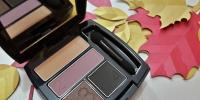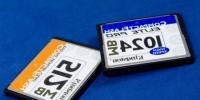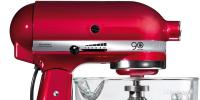How plastic cards are made
Contact, contactless, bank, payment, transport cards - familiar? This is what we use every day now. In recent years, NFC technology has breathed new life into payment systems, creating a sense of the future. Attached - paid.
It was interesting how plastic cards are produced, but due to special security requirements, it is difficult to look at the production, but I succeeded.
I'm talking about the example of NovaCard, a leading manufacturer of plastic cards in Eastern Europe, Russia and the CIS countries. Starting with renting a room at the Institute of Applied Physics of the Academy of Sciences and purchasing the first personalization equipment in 1994, NovaCard became the first in Russia to manufacture plastic cards. Now, having passed through numerous certifications of international payment systems and audits of the largest mobile operators and banks, it has become a leading manufacturer of plastic cards in Eastern Europe, Russia and the CIS countries. Clients of more than 300 Russian and foreign banks; GSM operators of cellular communication; large retail chains; insurance and medical institutions. Now NovaCard produces any types of cards.
The key stage in the history of the company's development was the move to one of the most beautiful buildings in Nizhny Novgorod - the former Romodanovsky railway station. To produce bank cards of international payment systems, it was necessary to meet the requirements of Visa and MasterCard certification. It was easier to buy your own building and create a powerful security system from scratch.
In 2001, the NovaCard company acquired the building of the former Romodanovsky railway station. The station ceased to function in the early 70s and by that time had turned into ruins. Restoration and reconstruction took two years. During this period, according to old photographs and drawings, the station building was restored in the smallest detail. And in 2003 the company moved to 4 thousand square meters. m.
1. Cards containing signs of payment and security elements of payment systems can only be issued at enterprises that have been certified both in terms of quality management and physical and logical security of production, so now the enterprise is equipped with one of the best security systems that I have seen. The requirements of international standards in the plastic card industry have turned the building into an impregnable fortress. Around the camera, each door requires a card, which allows you to know the route of movement of each employee. Entrance to the production and personalization zones is carried out through a special gateway with biometric authentication.
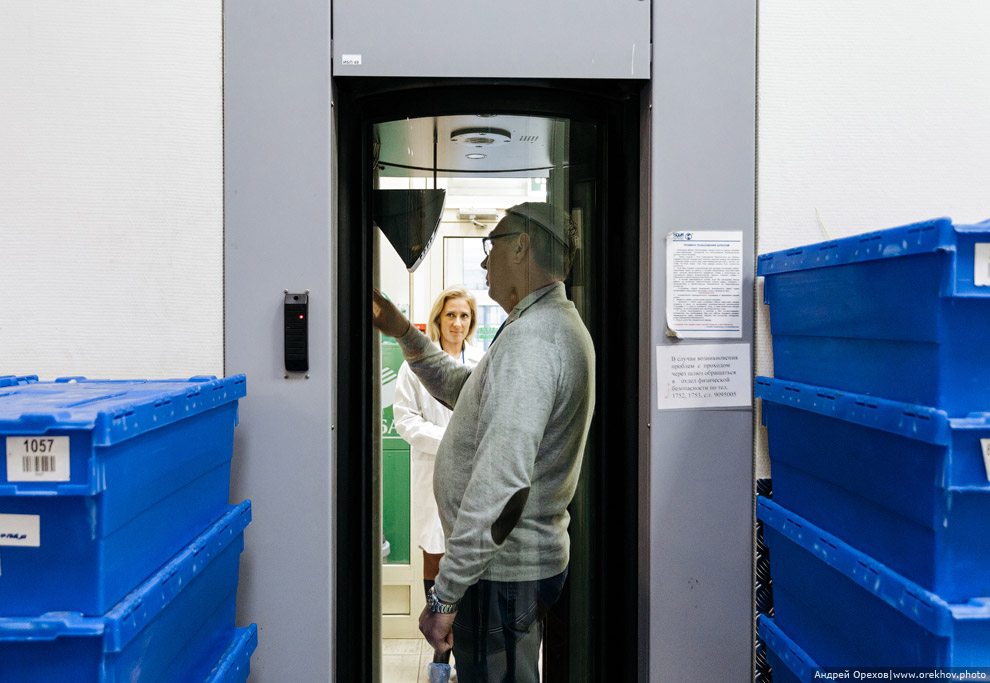
2. Signed an NDA (non-disclosure agreement) before receiving the pass. I cleared my pockets, took off my watch, put on a long robe with no pockets so I couldn't carry anything with me, and put the camera in a separate box for transfer to the other side. I went to the airlock, where they weighed me, checked the print of my right hand and scanned it for metal. There was a complete feeling of a fantastic space movie.
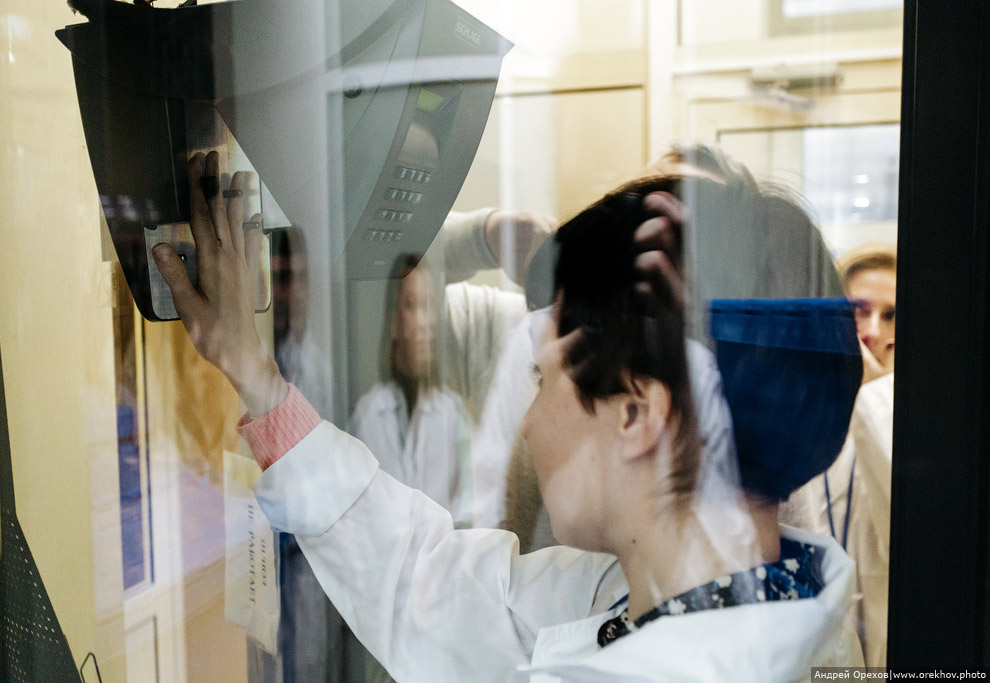
3. On the other side of the gateway you immediately find yourself in the production corridors. Around sealed containers with cards.
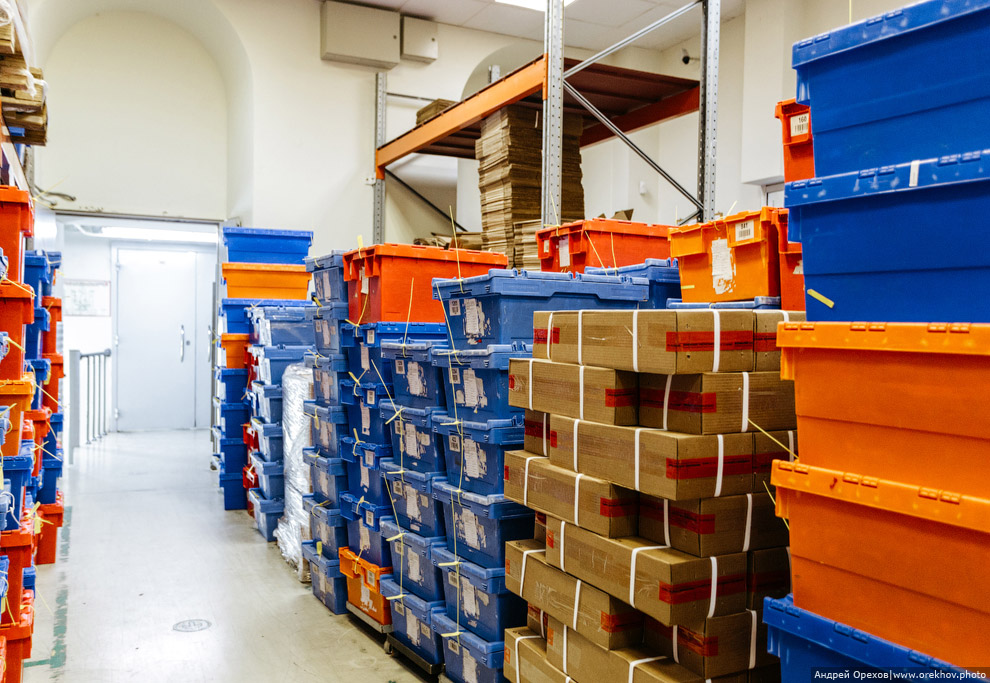
4. There are 7 stages in the production cycle of plastic cards: printing, assembly, sintering, punching, chipping and personalization. The first stage reminded me of a typography. Similar machines, on which blanks of the front and back sides of cards are printed from plastic. Currently, the most commonly used card materials are polyvinyl chloride (PVC), acrylonitrile butadiene styrene (ABS) and polycarbonate (PC).
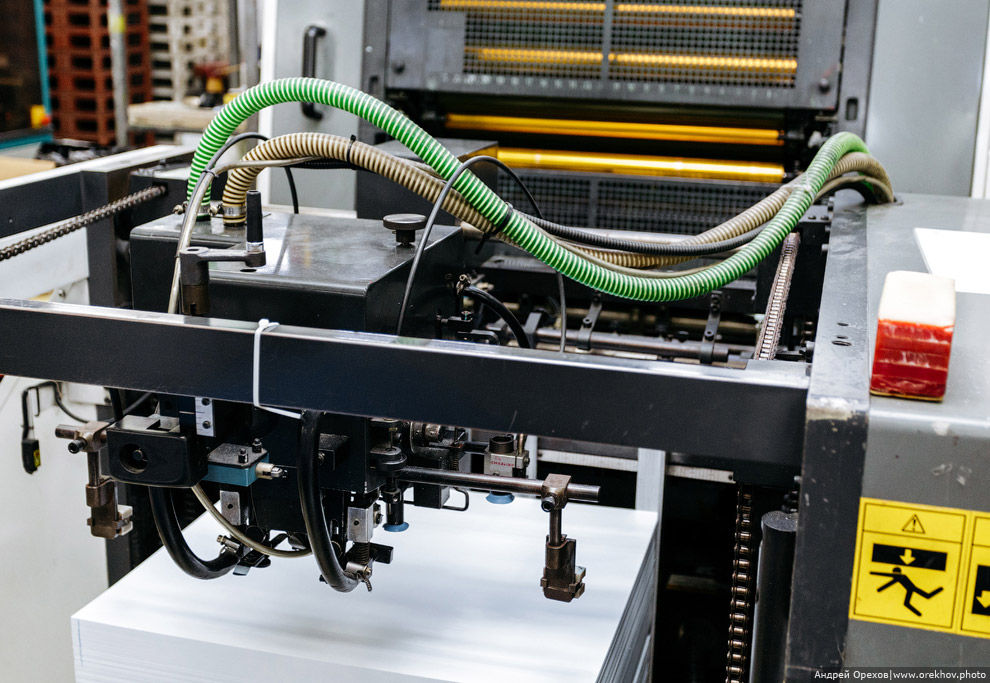
5. Depending on the solution, conventional inkjet, offset or silk screen printers are used.
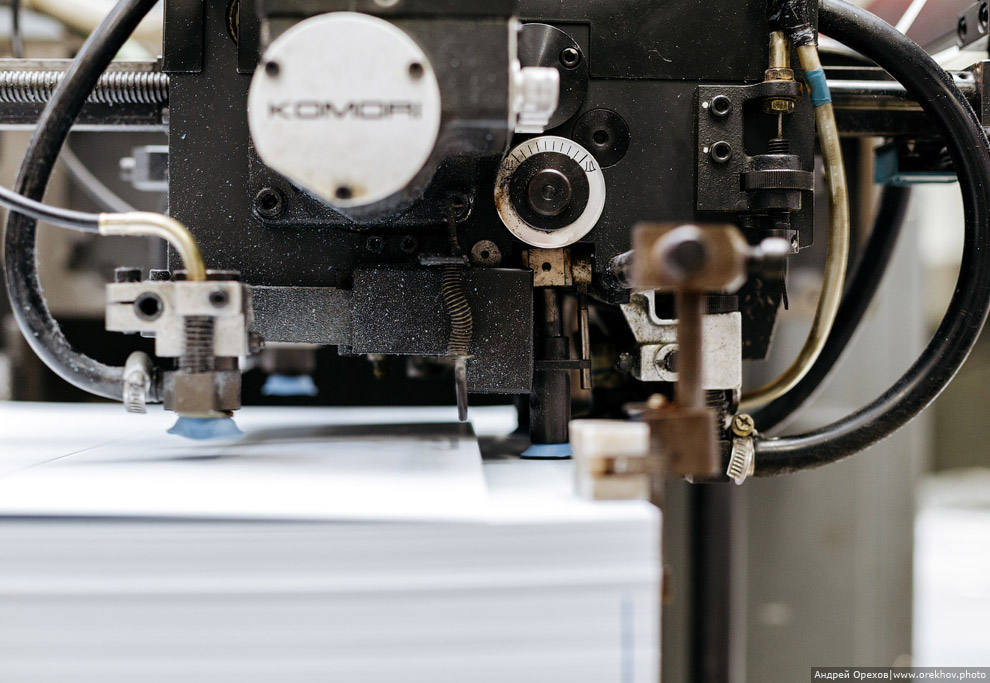
6. On second stage the layout of the multi-layer base of the cards takes place. "Burger" can be of two types. The contact card consists of four layers: a protective layer, the front side, the back and another protective layer. The contactless card has a fifth layer. Between the printed sides, another layer with the NFC module is laid. At the same stage, magnetic strips are pressed on at a separate workplace, if required.
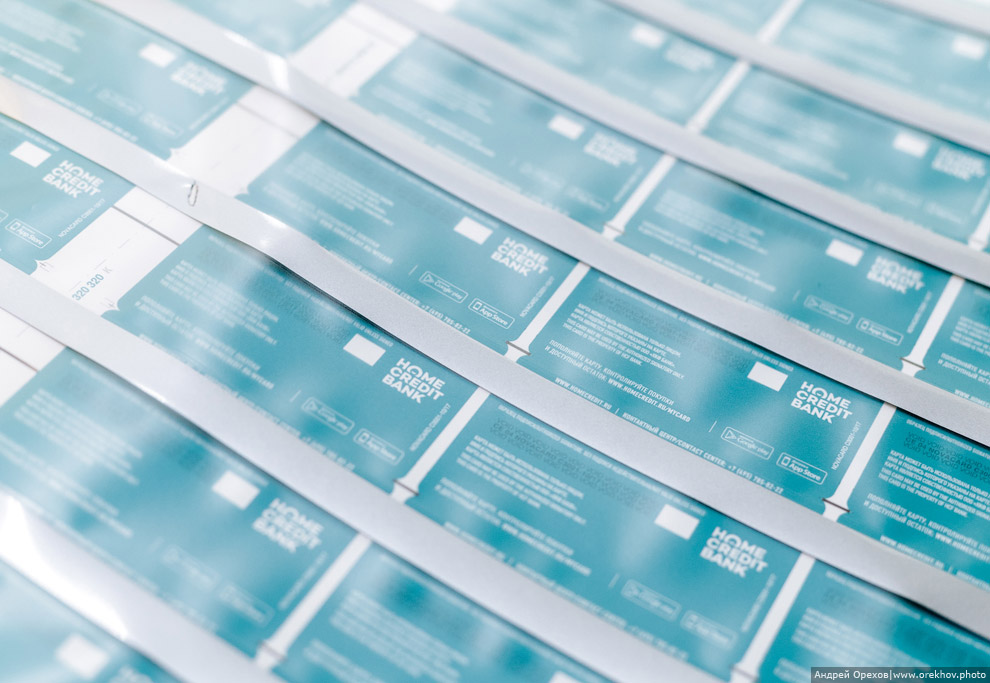
7. At the third stage The “burger” from the layers enters the thermal press, where, while maintaining the specified temperature and pressure, the multilayer base is sintered with printing design elements, a laminate and a magnetic stripe. While one batch of sheets is being hot worked, the other is being cooled down. This is how continuity of production is achieved.
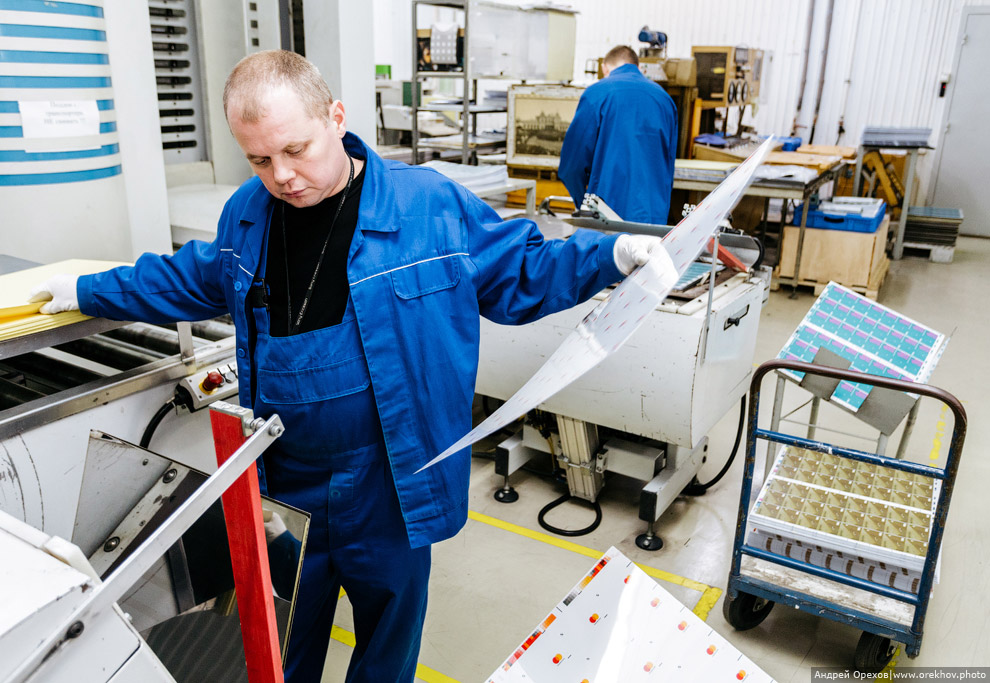
8. As a result, a large sheet is obtained, on which 48 plastic cards are placed.
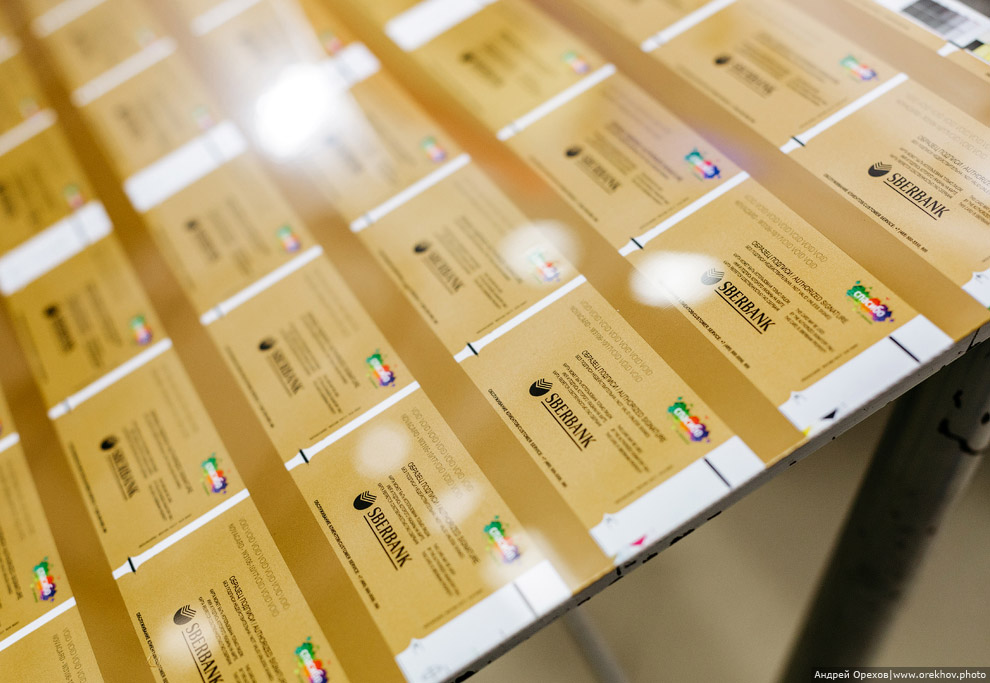
9. Now NovaCard employs about 500 employees. Each of those who work in production is checked through special channels by the security service. Work is carried out around the clock. Shifts 2 through 2 to 12 hours. There is an extra charge for night shifts.
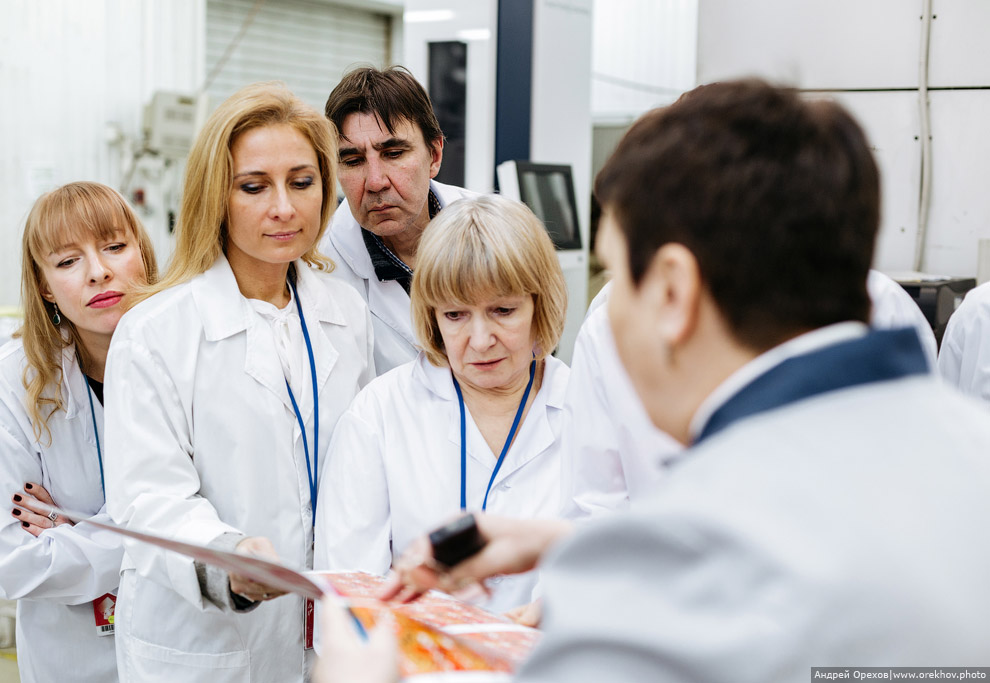
10. Fourth stage- this is the supply of finished sheets with magnetic stripes to the cutting machine. The operator only places the printed and hot-formed plastic sheets at the head of the conveyor. Further, the final cutting of blanks occurs automatically.
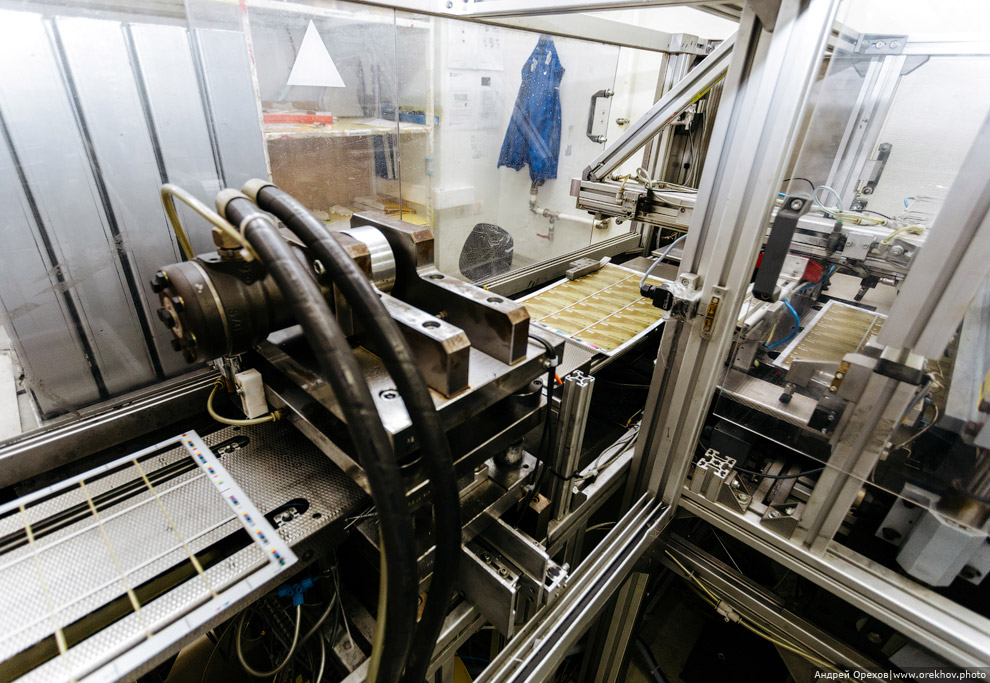
11. Die-cut cards are automatically fed through the conveyor to the receiving devices, and the rest of the plastic falls into the box.
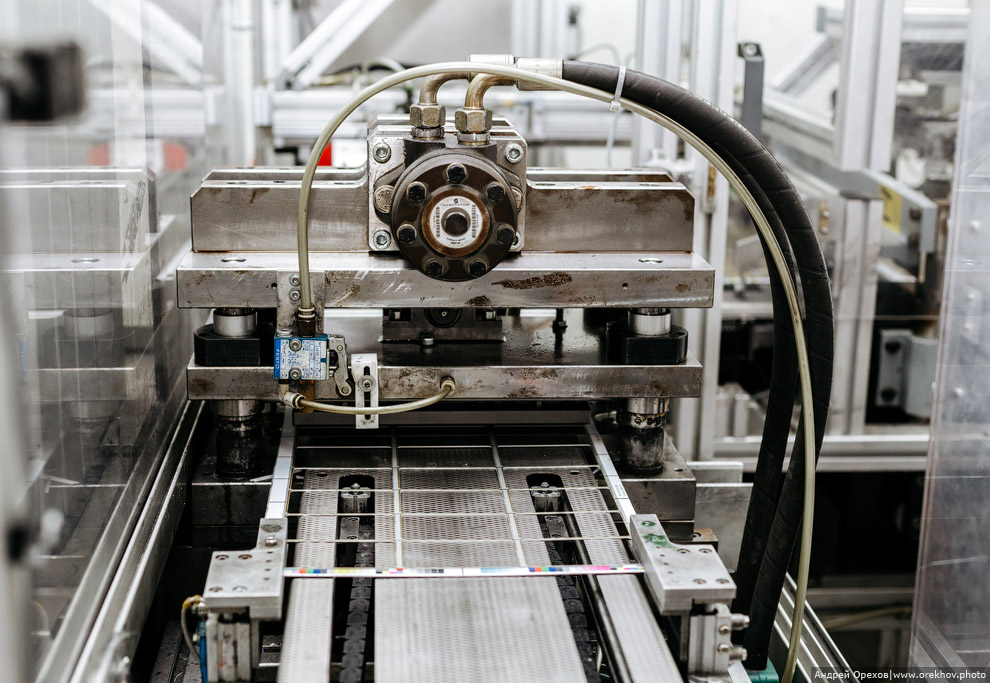
12. Smooth rows of plastic.
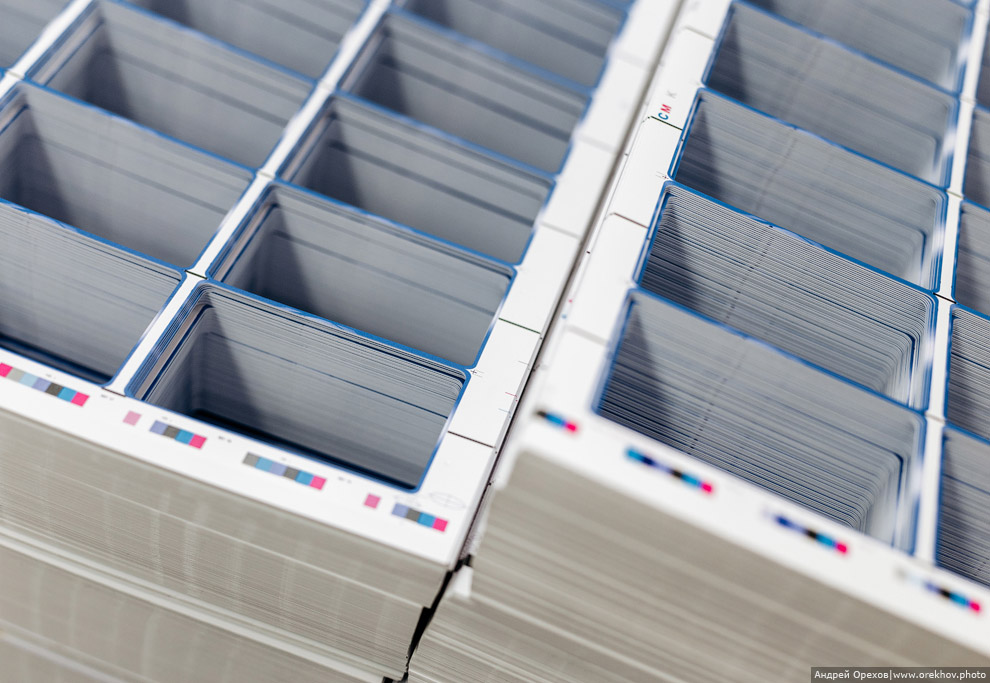
13. Finished plastic cards are sent to the inspection site. Some types of cards at this stage are already ready and sent for personalization. Payment and sim cards need the following technological steps.
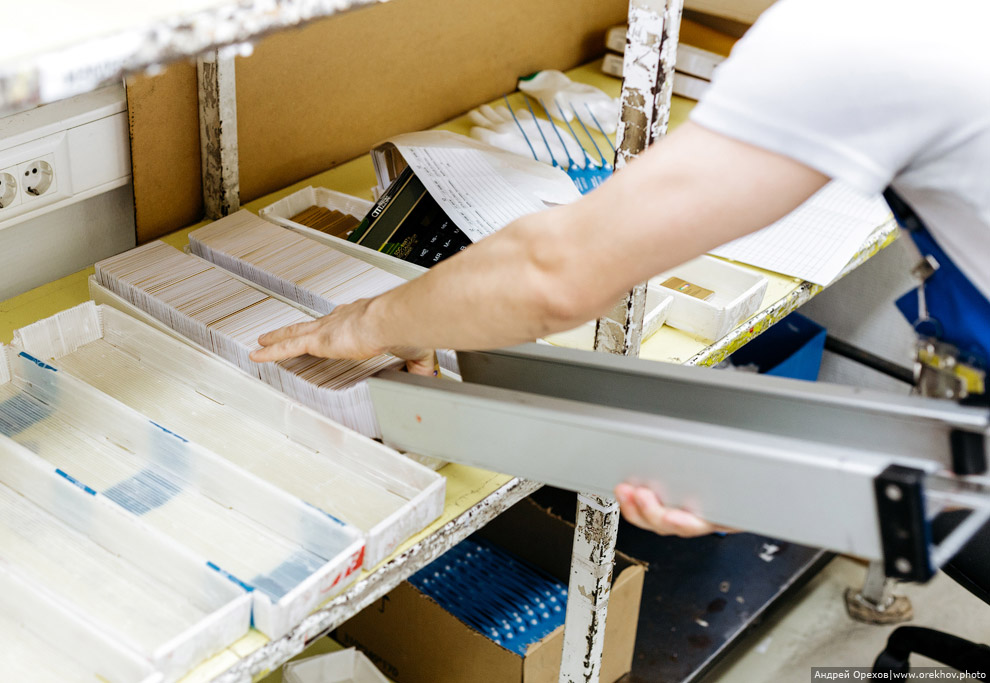
14. Starting from the felling, the movement of each card is strictly controlled. Before packing into a container, the cards are calculated using this device.
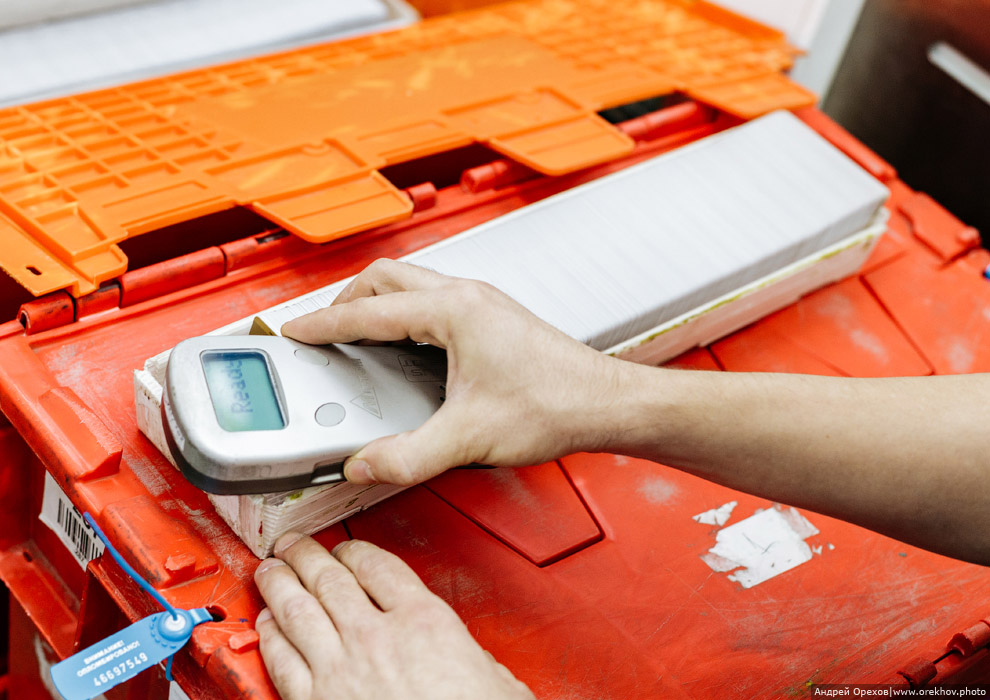
15. The number is recorded in the document and sealed in the container together with the cards. Now, at the next stage, after opening the box, they are required to check the number of cards and, after the work has been done, check again before passing on. If the numbers diverge, then production stops and the search for the same card begins. Usually this is either a human factor, or the machine chewed it up.
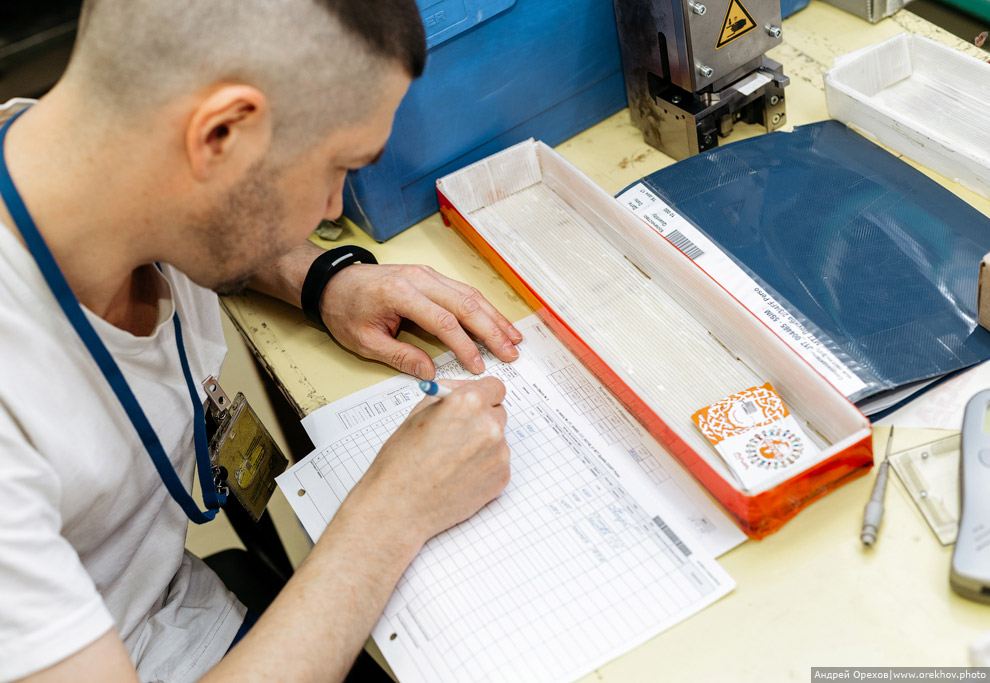
16. Fifth stage plastic card manufacturing is the placement of a hologram, which is applied by a laser on a very thin, metallic film and which, depending on the tilt of the card, gives the impression of two or three dimensions. VISA cards feature a three-dimensional dove, the MasterCard hologram contains the inscription MasterCard and the symbol of the connected globes. This prevents the card from being falsified using simple copying methods, therefore it is an important element in the protection of bank cards.
According to security standards, NovaCard is required to cut the tape after placing the hologram on the card.
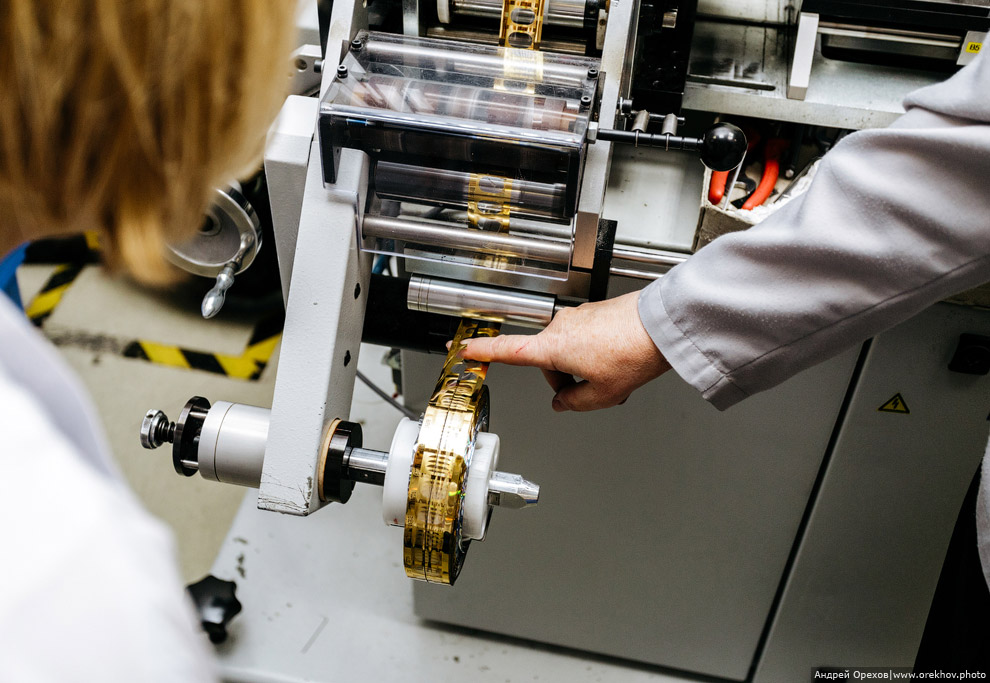
17. On the sixth at the technological stage, a module with a microprocessor is placed in the card. In order to place a module in a plastic card, a recess (cavity) is made in its surface. The chip is embedded using an adhesive film, followed by heat setting under pressure, so that it cannot be removed without damaging the plastic.
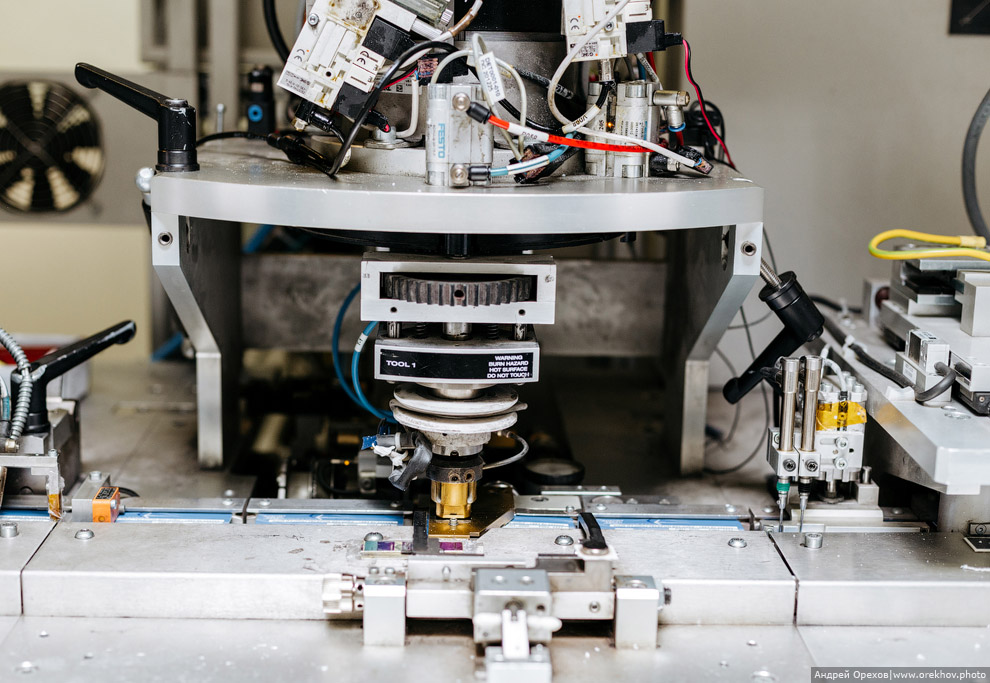
18. If we talk about SIM cards, then after installing the chip, holes are cut in the card for easy removal of the SIM card itself.
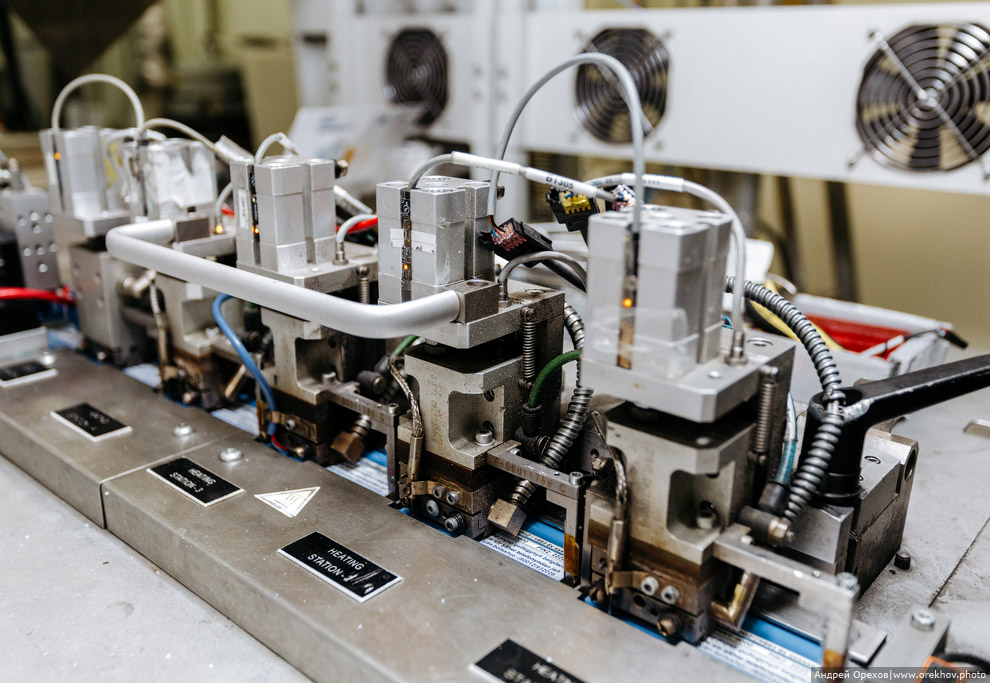
19. The finished card can be tested, programmed and verified, and then used for specific applications. Such a drum is used for programming cards for "Altyn Asyr" - the largest operator in Turkmenistan.
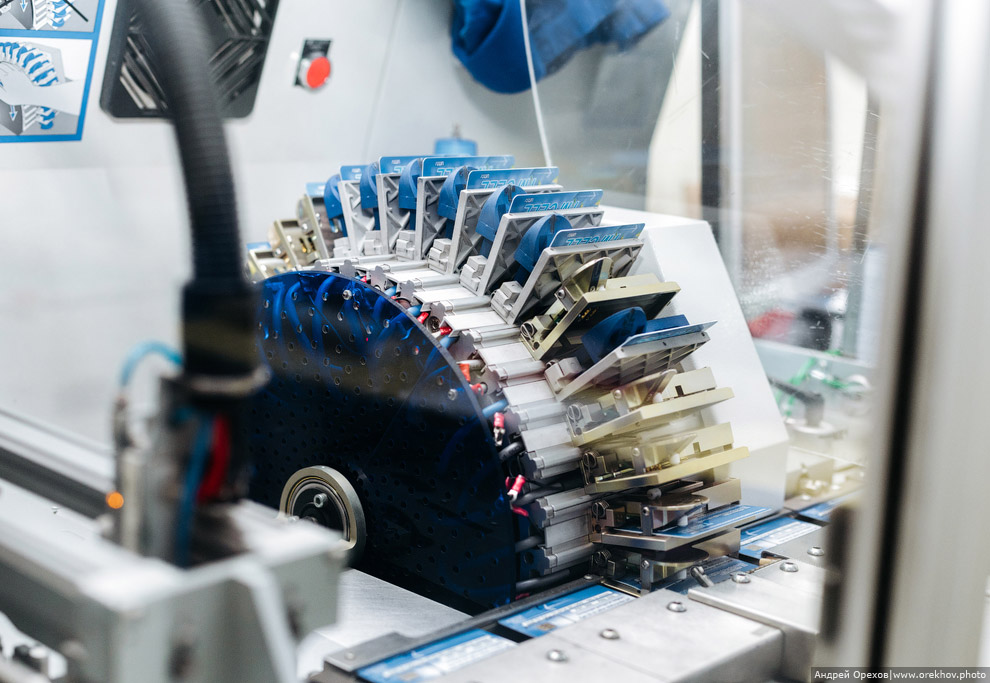
20. The last step will be personalization. There is a whole personalization department on NovaCard, where for obvious reasons they did not let me in. Even the head of production does not have access. Personalization of cards is made at the request of customers. Some banks apply personal data on their own.
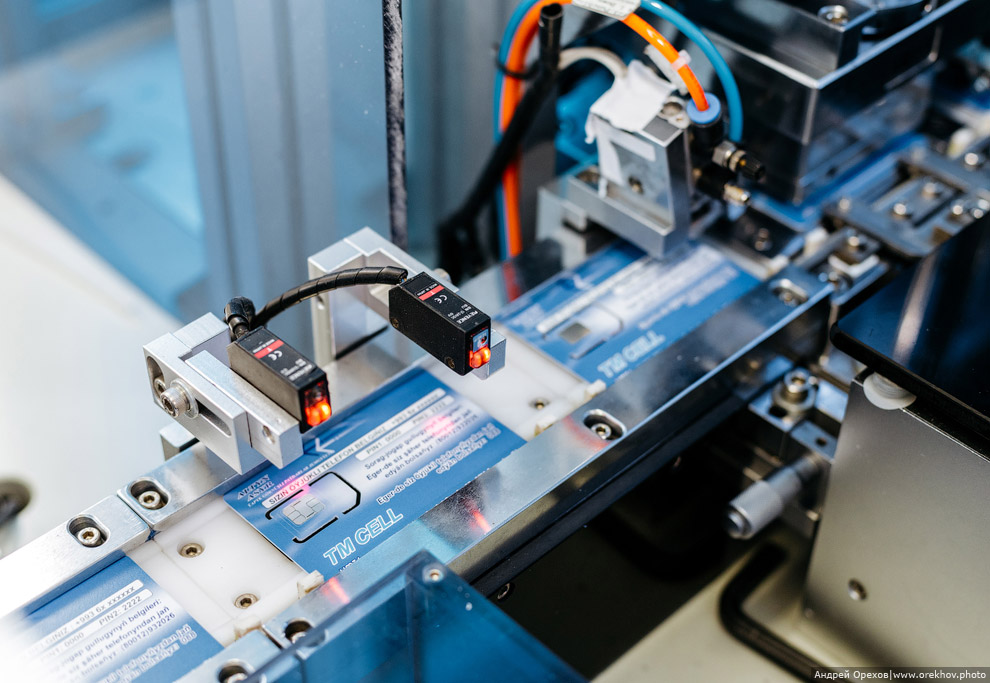
21. I will note quality control as a separate item. Starting from cutting, the cards undergo constant quality control - this is not only the appearance, but also various security elements. The girls flip through the cards at an insane speed. I can't even focus with my eyes!
In addition, the delivery of cards is also a separate item of requirements. This also has its own standard that must be met. NovaCard has a logistics department that provides delivery using its own fleet of special vehicles.
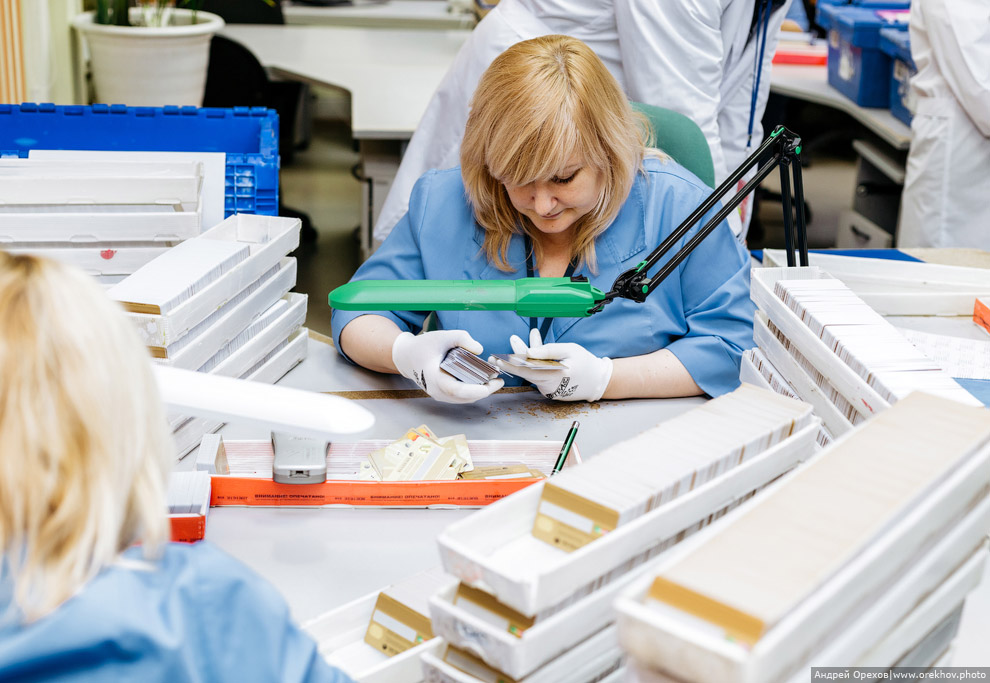
Such is the production path that a plastic card goes through before being at the bank


